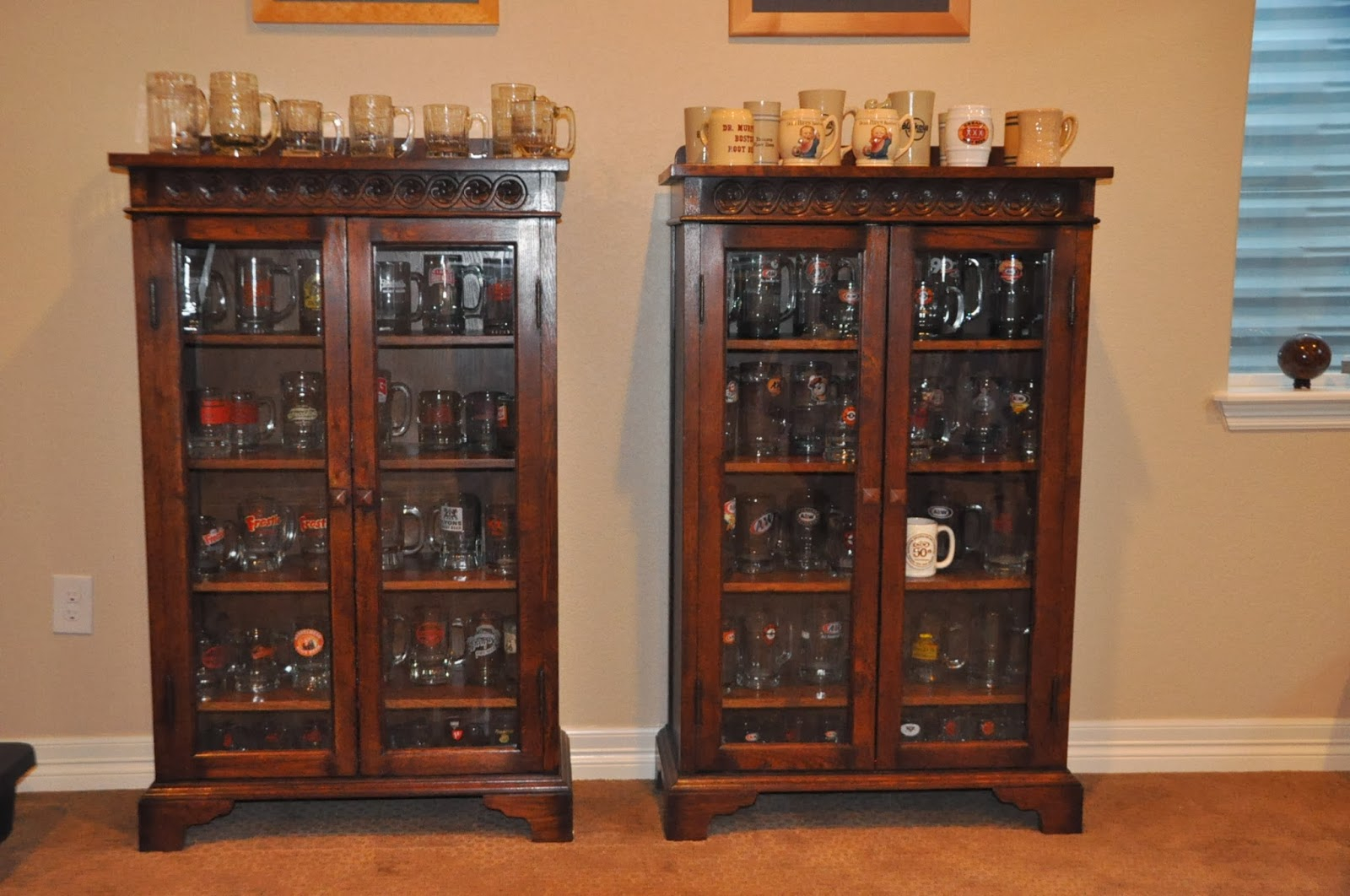Types of Beer Glass Display Cabinets

Beer glass display cabinets offer a stylish and functional way to showcase a prized collection. The choice of cabinet depends on factors such as budget, available space, desired aesthetic, and the size and fragility of the glass collection. Several types exist, each with its own advantages and disadvantages.
Variety of Beer Glass Display Cabinet Styles
The selection of beer glass display cabinets encompasses a wide range of styles, materials, and sizes to cater to diverse needs and preferences. The following table summarizes key characteristics of common types.
| Type | Material | Size (Typical Range) | Design Features |
|---|---|---|---|
| Wall-mounted | Wood, Glass, Metal | Small to Medium (12-36 inches wide) | Space-saving, often features shelves or racks, can be customized to fit specific spaces. |
| Freestanding | Wood, Glass, Metal | Small to Large (24-72 inches wide) | Versatile placement options, often includes lighting, may have doors or be open-shelved. |
| Corner | Wood, Glass | Medium to Large (Variable, depending on corner size) | Maximizes corner space, often triangular or L-shaped, may include adjustable shelves. |
| Custom-built | Wood, Glass, Metal, Combinations | Highly Variable | Tailored to specific needs and space, allows for unique design elements and integration with existing décor. |
Advantages and Disadvantages of Different Cabinet Types
The optimal choice of beer glass display cabinet hinges upon a careful consideration of its merits and drawbacks.
| Type | Advantages | Disadvantages |
|---|---|---|
| Wood | Classic aesthetic, durable, can be customized, provides good protection. | Higher cost, susceptible to damage from moisture, requires regular maintenance. |
| Glass | Modern and sleek appearance, allows for maximum visibility, easy to clean. | Fragile, can be expensive, may not offer sufficient protection from impacts. |
| Metal | Durable, resistant to damage, offers good security. | Can be heavy, may require professional installation, can be less aesthetically pleasing than wood or glass. |
Unique Design Elements in High-End Beer Glass Display Cabinets
High-end beer glass display cabinets often incorporate sophisticated design elements that enhance both functionality and aesthetic appeal. These elements can significantly increase the cost but also elevate the overall presentation of the collection.
For example, a high-end cabinet might feature hand-carved wooden accents, intricate metalwork on the doors and frames, or custom-cut glass shelves with beveled edges. The use of exotic woods like mahogany or cherry adds to the luxurious feel, while the incorporation of LED lighting provides optimal illumination and highlights the glass collection’s details. Some cabinets might include built-in humidification systems to maintain the condition of delicate glassware. Masterful craftsmanship is evident in the precise joinery, flawless finish, and overall attention to detail. A bespoke cabinet might incorporate a locking mechanism for security and feature a custom-designed interior layout to perfectly accommodate the shape and size of each beer glass. The use of high-quality materials, such as tempered glass for shelves and robust hardwood frames, ensures longevity and durability. One could imagine a cabinet with a mirrored back to amplify the display effect, further enhancing the visual appeal.
Where to Buy and How Much to Spend

Acquiring a beer glass display cabinet involves careful consideration of both retailer and cost. Prices vary significantly depending on the source, features of the cabinet, and overall quality. Understanding these factors is crucial for making an informed purchase.
Pricing and Sourcing of Beer Glass Display Cabinets
Retailer Comparison, Beer glass display cabinet
The cost of a beer glass display cabinet can vary substantially depending on the retailer. Online marketplaces offer a wide selection at varying price points, while specialty stores and antique shops provide more curated options, often at a higher cost. The following table illustrates a comparative analysis of pricing across different retail channels. Note that prices are estimates and can fluctuate based on specific features, condition (for antique shops), and current market conditions.
| Retailer | Price Range | Pros | Cons |
|---|---|---|---|
| Online Marketplaces (e.g., eBay, Amazon) | $100 – $5,000+ | Wide selection, competitive pricing, convenience | Potential for lower quality, shipping costs, difficulty inspecting before purchase |
| Specialty Home Furnishing Stores | $300 – $10,000+ | Higher quality materials, expert advice, warranty options | Higher prices, limited selection compared to online marketplaces |
| Antique Shops | $200 – $5,000+ (highly variable) | Unique and vintage pieces, potential for investment value | Limited availability, higher prices, potential for damage or restoration needs |
Factors Influencing Cost
Several factors significantly impact the price of a beer glass display cabinet. Size is a primary determinant, with larger cabinets naturally commanding higher prices due to increased material usage and manufacturing complexity. The choice of materials also plays a crucial role. Solid wood cabinets, for instance, are generally more expensive than those constructed from particleboard or MDF (Medium-Density Fiberboard). Similarly, intricate craftsmanship, such as hand-carved details or inlaid designs, significantly increases the cost. Finally, the inclusion of features like lighting, locking mechanisms, and adjustable shelving also adds to the overall expense. A simple, small cabinet made from basic materials will be significantly cheaper than a large, ornate cabinet made from high-quality wood with intricate detailing and added features.
Selecting a Suitable Display Cabinet
Choosing the right beer glass display cabinet requires a careful assessment of several key factors. Available space dictates the maximum dimensions of the cabinet. The budget establishes a clear price ceiling, guiding the selection process. The size and style of the beer glass collection directly influence the required cabinet capacity and aesthetic preferences. For example, a large collection of diverse glasses may necessitate a larger cabinet with multiple shelves, while a smaller, more curated collection might be suitably displayed in a smaller, more compact unit. Considering these factors ensures that the chosen cabinet effectively protects and showcases the collection within the available space and budget constraints.
